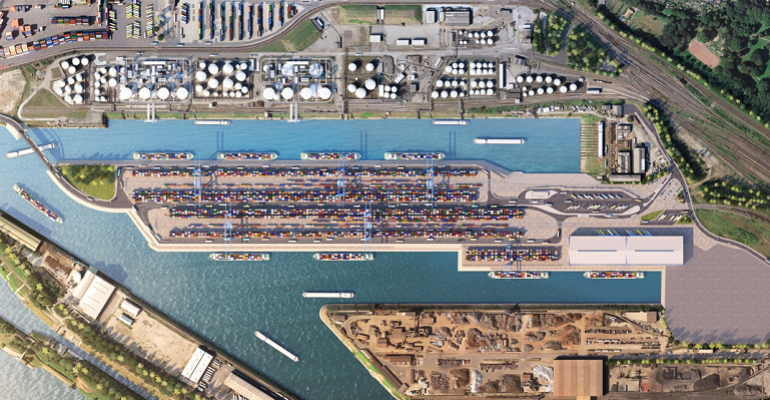The new terminal is to be developed with Cosco Shipping Logistics, Hupac SA and the HTS Group aims become the first terminal with completely climate-neutral operations using hydrogen, intelligent networking, and the ability to supply neighboring districts with energy.
The European largest hinterland hub will be part of the “enerPort” project. The next step is to install a sustainable energy system in the DGT that links renewable energies, energy storage, consumers, and various hydrogen technologies. Key components for this are fuel cell systems and hydrogen engines for power generation as well as battery storage.
“In the Duisburg Gateway Terminal, our operations will not only be … digital and efficient, but also 100% climate-neutral. The largest development project since ‘logport I’ 22 years ago is a model project with a resonance far beyond the Port of Duisburg. It shows what the logistics and energy supply of tomorrow will look like,” said Markus Bangen, CEO of Duisport.
The project is being funded by the German Federal Ministry of Economics and Climate Protection for a period of four years as part of the “Hydrogen Technology Offensive”.
“Specifically, we will implement a sustainable, hydrogen-based energy concept that aims for a high level of self-sufficiency,” Alexander Garbar, Deputy Head of Corporate Development and Sustainability Manager at duisport, explained.
“An intelligent local energy network couples and controls renewable energies in the form of photovoltaic and hydrogen-based combined heat and power plants with electrical and thermal energy storage systems as well as hydrogen storage and consumers such as onshore power, charging stations and crane systems. A future supply of adjacent districts will also be considered on a theoretical basis.”
One special feature of the “enerPort II” project is its modular structure. This creates the conditions for an uninterrupted continuation of the transformation process, as follow-up or satellite projects can be integrated without any problems. For example, electrolysers or hydrogen-powered locomotives.
“This will make the terminal the anchor point and nucleus for the transformation process of the entire Port of Duisburg,” Garbar added.
After the two construction phases, a modal split is to be implemented at the DGT that provides for 40% transport by rail, 40% transport by inland waterway vessel – and only 20 % road transport by truck. For this purpose, 240,000 square metres of terminal space will accommodate six gantry cranes, twelve block train tracks with a length of 730 metres, and several berths for inland waterway vessels.
Hydrogen-powered shunting locomotives, controlled digitally, are to be used at the DGT in the future. An onshore power connection is available for each barge at the dock to minimise greenhouse gas emissions.
The new large-scale terminal is already considered as a test field and model for climate-neutral inland ports worldwide. The DGT will also bolster Duisport’s handling capacity, with China trains increasing to up to 100 units per week, for example.
Copyright © 2024. All rights reserved. Seatrade, a trading name of Informa Markets (UK) Limited.
Add Seatrade Maritime News to your Google News feed.  |

